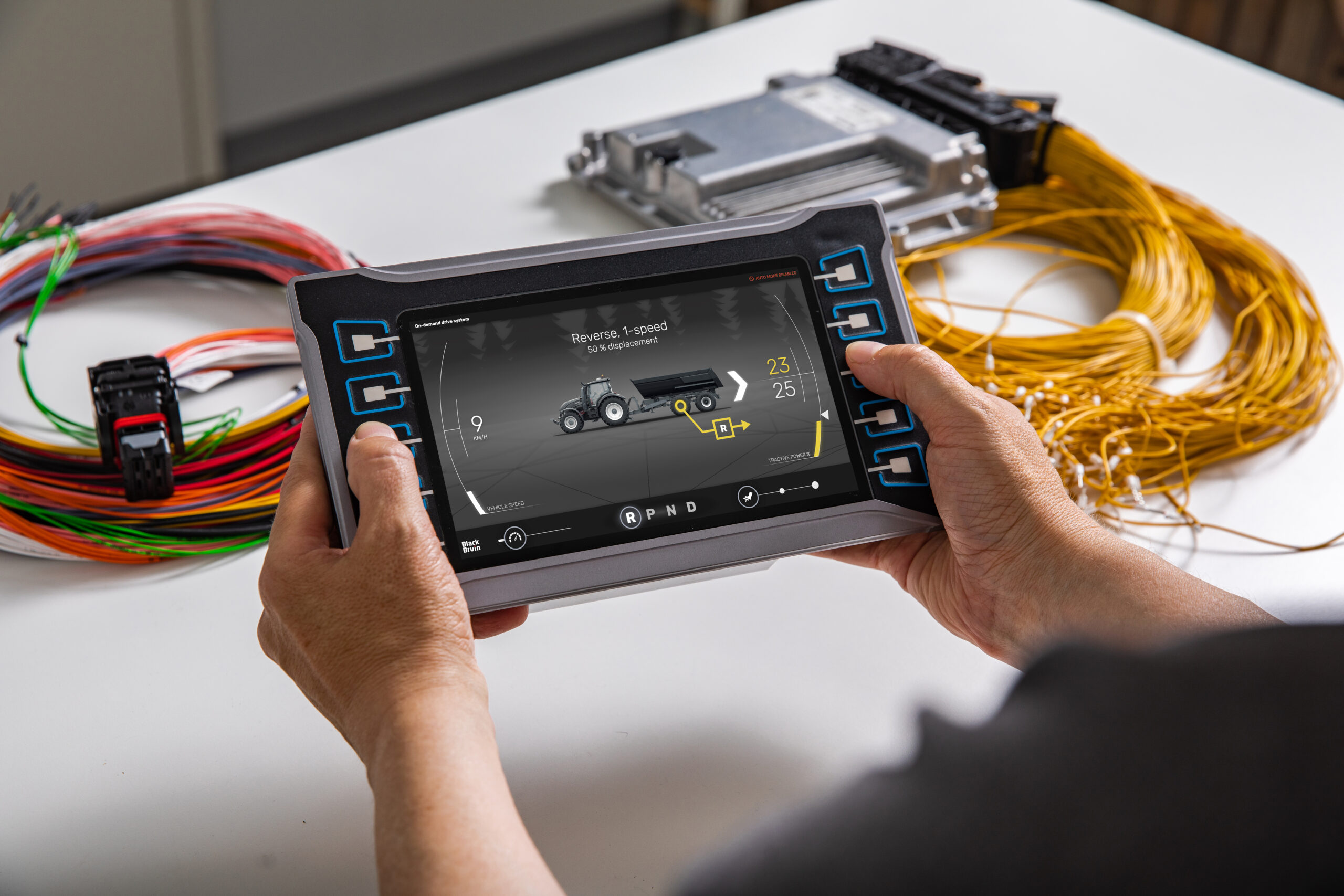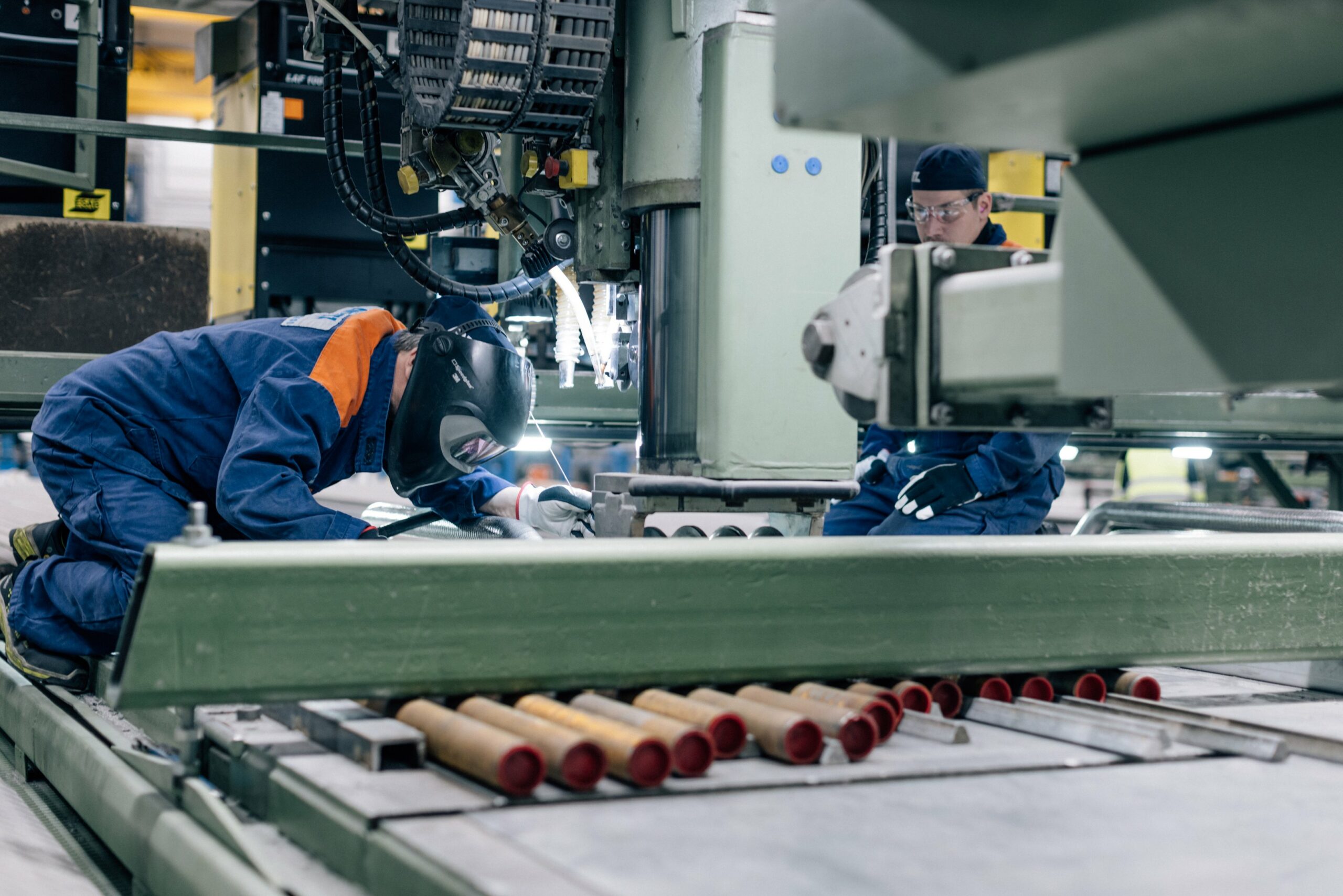Imagine being a farmer who, instead of having to go out in the field to work, can spend their morning calmly sipping their coffee and watching as their machinery goes to work on its own. Wouldn’t that be great?
This could be the future as more and more machine manufacturers are considering autonomous devices as their future goal. While it is not likely that all machines will be fully autonomous any time soon, almost all machines and devices can make life easier for their users through intelligent assisting functions. A good example of an assisting system is the boom control in forest machinery. Previously, the operator had to direct many moving machine parts at the same time, but now they can focus solely on directing the tip of the boom.
However, increasingly intelligent machines require increasingly complex control systems. Thus, the amount of software in the machines is currently increasing exponentially with each new model that enters the market. This is giving grey hair to device manufacturers, because complexity prolongs product development and increases the number of malfunctions occurring in customers’ machines.
One of the greatest challenges in terms of quality is the increased number of features that can be included in the device. For example, a customer buying a car can choose a particular engine type, intelligent mirrors, adaptive cruise-control, parking sensors, etc. Every selection affects the final structure and software of the product, which means that, eventually, there can be millions of different product combinations. This is particularly true for complex machinery. Testing all these combinations with a physical prototype is not feasible, as the costs would be enormous.
But what if the device manufacturer could double the speed of product development? What if this could be done by significantly reducing the number of physical prototypes, thus saving 30–50% of the costs? This can be achieved by making full use of the digitalisation of the device as well as its design and complete lifecycle.
What if you could digitally simulate and optimise every stage of the product lifecycle, from design to end-of-life?
What is DPL?
Digitalised Product Lifecycle (DPL) covers the entire journey of a product, from its inception all the way to its phase-out. At the centre of DPL is the product’s digital twin, which looks like the real machine visualised in 3D and also works like the actual machine. It includes the device’s physical models, such as the mass, strength and flexibility of its parts, as well as the software and data needed for the operation of the device.
Concept creation phase:
The design of the digital twin begins with a virtual concept, which can be used with simulation tools to test whether the product’s performance, environmental load or business model meets the demands. Modelling is done by building the concept out of the components of current products and by adding/modelling new components into the simulated model at an adequate level. By creating a light concept like this, you can make sure that it is worthwhile beginning the product development process.
R&D:
In the product development phase, the digital twin’s prototype is built. At this point, the model can be referred to as a “digital prototype” or “virtual prototype.” Digitalising the product development phase has massive benefits if the changes to the design principles can be implemented in practice on a large scale. The most significant benefits include shorter time to market, fewer physical prototypes (less costs) and better quality products.
But what are the actual changes to the traditional model? Product development based on virtual prototypes builds on model-based design. This means that the product’s design as well as its mechanical, hydraulic, electronic and software design are all done with the same virtual prototype. This prototype is also used to test functionality.
Production:
The digital twin is born when a digital “copy” is created of the actual product manufactured in the production plant. In order to be able to create a digital twin, the device manufacturer must have information systems capable of creating a 3D model and a physical model of the product as well as the software and configuration data of its control system.
Even in the production phase, the digital twin can be created before the physical device is manufactured, which can benefit the business. This way it is possible to digitally simulate the production beforehand. The benefits of this method include quality assurance of the production throughput, as the functioning of the device configuration can be verified through simulation.
Benefits of the digital twin in the field
The digital twin offers many new business opportunities during the period when the product is being used. When the back-end system has a digital copy of the product, it also serves as a seamless IoT system and can be utilised in data analytics, for example.
One application for the digital twin is transforming a traditional product business into a service-based business, either in the form of higher-quality maintenance activities or a pay-per-use service. If the financial benefits the device or equipment produces for the buyer depend on its effective use, which is the case with forest machinery for example, then simulator-based training can also bring significant benefits.
Change management at the core
All the technology and know-how needed for using the digitalised product lifecycle exists already, but it is challenging to implement the change in traditional manufacturing organisations. The change is not only technological as it also concerns the organisational model, the changing roles of employees and the changing or combining of different development and manufacturing processes. Implementing all these changes successfully requires ambition and a clear plan, which the entire organisation must commit to, including the most senior management. The change itself can be implemented in a controlled manner by starting from any chosen lifecycle stage and by proceeding one step at a time towards a result that enables new business.



